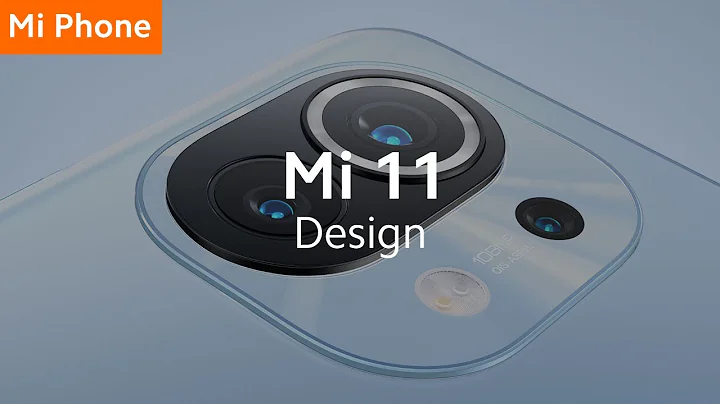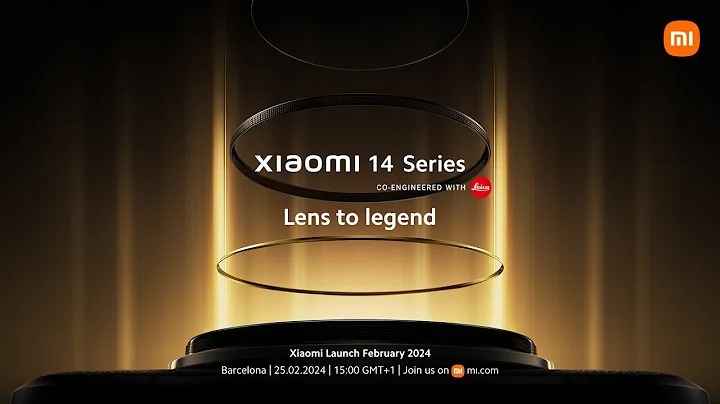incident: Xiaomi mobile phone officially released the official promotional poster of Xiaomi 10. The official emphasized that this high-end flagship phone is the culmination of ten years of Xiaomi . Xiaomi Mi 10 has been confirmed to be released online on February 13, and pre-orders have been opened before.
It is reported that Xiaomi 10 uses graphite heat sinks and graphene film heat sinks for heat dissipation. Currently, the company is also developing heat dissipation products that are more suitable for the needs of 5G mobile phones. One of the highlights of this Xiaomi product is the upgraded heat dissipation function, which is also one of the selling points of Xiaomi’s flagship machine. In fact, in addition to Xiaomi, mobile phone giants have begun to compete in the cooling function of mobile phones. So the question is, why does mobile phone cooling technology attract giants to spend money?
5G mobile phones improve the heat dissipation market
The heat dissipation problem has always been a pain point and difficulty that the consumer electronics industry is highly concerned about. Smartphones contain many components that generate heat, and also contain many components whose performance and lifespan are easily affected by heat. The processor is the component that generates the most heat in a smartphone. Other components that generate heat include image sensors, light sources, and batteries.
With the development of 5G, the computing power of 5G chips is at least 5 times higher than the existing 4G chips, and the power consumption is about 2.5 times higher. With the increase in AI technology and AR applications, the computing speed and data processing capabilities of mobile phones continue to increase, and the heat generated by mobile phones also continues to increase. Therefore, 5G mobile phones are expected to use more new heat dissipation methods such as heat pipes or vapor chambers. Therefore, in the early stages of the 5G replacement wave, it is more urgent to improve heat dissipation technology.
From 2016 to 2020, the compound annual growth rate of the smartphone radiator component market will reach 26.1%, and the market size will reach US$3.6 billion in 2022. Why do
mobile phones need more and more heat?
The reason is that the development of mobile phones puts forward higher requirements for heat dissipation:
mobile phone SoC performance has been significantly improved, and the performance improvement has also brought about an increase in the absolute value of heat density; 5G mobile phones need to add more antennas to receive 5G signals. The heat dissipation of these components requires higher standards; now the mainstream casing material of mobile phone appearances is glass, and the heat dissipation of glass casings is worse than that of metal casings; the thinner design of mobile phones will make the components more closely arranged, and these are all harmful to mobile phones. The heat dissipation puts forward new requirements.

5G mobile phones are equipped with a lot of cooling technologies
In addition, the increasingly powerful functions of mobile phones also rely more on the development of mobile phone cooling technology. Flexible OLED screens currently have some problems, such as high power consumption and susceptibility to high temperatures; heat generated by multiple cameras; heat generated during wireless charging and other issues that increasingly require mobile phone manufacturers to develop heat dissipation. Therefore, the development of cooling technology by mobile phone manufacturers can be said to be a historical necessity.
Mainstream mobile phone heat dissipation technology inventory
Currently, the heat dissipation methods on mobile phones mainly include graphene heat dissipation, metal backplate/frame heat dissipation, silicone grease heat dissipation, and liquid cooling heat dissipation. These four types of heat dissipation are combined in mobile phones. appear in smartphones.
1, graphene cooling
Graphene cooling is currently the most widely used cooling technology in mobile phones. Graphene heat dissipation is a heat dissipation technology developed mainly by utilizing the excellent thermal conductivity of graphite crystals. The advantages of graphite crystals as heat dissipation materials in mobile phones are: good high temperature resistance, not easy to deform when heated, strong plasticity, and the heat dissipation shape can be changed according to needs. The iPhone model is the first to use graphene heat dissipation technology in smartphones.

If you analyze the graphene material from a chemical perspective, you can find that graphene can be said to be "born" to serve the heat dissipation of mobile phones: the heat dissipation coefficient of graphene is 2 to 5 times that of copper, but the density is only 1/10 to 1 of copper. /4, which facilitates the weight control of mobile phones; graphene is easy to process, and manufacturers can specify the shape of graphene according to the heat dissipation size; graphene can shield electromagnetic waves , solving the problems of heating of mobile phone components and electromagnetic interference of inside the mobile phone; at the same time, graphite Ethylene does not deteriorate with age.
Currently, graphene heat dissipation is not only used in smartphones, but also in tablets, PCs, laptops, , LED devices, etc.
2, metal backplate/frame heat dissipation
metal backplate/frame heat dissipation is to design a layer of metal thermal conductive plate inside the mobile phone, and then export the heat to the frame through the metal thermal conductive plate.
The current high-end method for metal backplane/frame heat dissipation is to install vapor chambers on the metal backplane. vapor chambers are flat heat pipes. The interior of the vapor chambers is filled with coolant. coolant evaporates when heated. After the condenser is cooled and liquefied, the heat can be transferred to the frame, thereby extending the service life of the mobile phone.

vapor chamber production process
vapor chamber production process is to provide a wick structure inside the upper and lower copper bases, then braze, pour coolant and then seal and solder. The vapor chamber will have different designs depending on the size of different components. The manufacturing process is relatively complex and the manufacturing cost is high.
3, liquid cooling
Liquid cooling exists in the form of a heat pipe inside the mobile phone, which uses the characteristics of the continuous transformation of vaporization and liquefaction during the heat transfer process of liquid to transfer heat.

liquid cooling heat dissipation principle
liquid cooling heat dissipation working process is: the condensate is heated and becomes steam → the steam flows to the condensation end under the pressure difference → the steam releases heat at the condensation end and condenses into liquid → the condensate at the condensation section end uses the capillary force of the liquid suction core Return to the evaporator end. The commonly used coolant material in liquid cooling on the computer side is water. The requirements on the mobile phone side are higher than those on the PC side, and oily materials are commonly used as the coolant. The advantages of
liquid cooling are long service life and flexible layout. The liquid cooling heat pipe will not cause mechanical or chemical degradation after being permanently encapsulated, so the typical service life is about 20 years; the liquid cooling heat pipe can be placed wherever heat dissipation is needed. At the same time, the liquid cooling heat pipe will also absorb heat from a distance. And then dissipate heat.
4, silicone grease heat dissipation
The advantage of silicone grease heat dissipation is to directly absorb the heat on the SoC and transfer the heat in a fast and direct way. This is currently the most effective method for mobile phone SoC heat dissipation, but the adhesive force of silicone grease heat dissipation is not strong. When used on the mobile phone, , copper foil, , etc. are required to seal the silicone grease to prevent the flow of silicone grease inside the mobile phone.
Leading mobile phone heat dissipation device companies:
1, Carbon Technology
focuses on the field of high thermal conductivity graphite heat dissipation materials and has become a mainstream supplier in the Android camp. The company currently provides complete terminal cooling solutions including high thermal conductivity graphite, ultra-thin heat pipes and VC. In the era of graphite film, Carbon Technology has gained the trust of Samsung, Huawei, VIVO, OPPO, etc. The company's graphite film products have been widely used in flagship models of the above-mentioned major customers, such as Samsung (NOTE 9/S9/A9), Huawei (P20/MATE 20), OPPO (R17), VIVO (X21/NEX), etc. Carbon Technology is expected to catch up with its Taiwanese counterparts in the 5G era and achieve comprehensive domestic substitution of mid-to-high-end cooling solutions. In terms of the trend of
, the stock price of Carbon Technology has not performed significantly. It is still at the bottom of the large cycle, and the current adjustment is above the weekly rising trend line. Combined with the fundamentals of the stock and the prospects of future 5G mobile phones, there is a certain bargaining value.
2, Feirongda
The company is a leading domestic cooling solution provider, providing cooling modules for first-tier mobile phone manufacturers such as Huawei and Samsung. The VC products have passed the certification of major manufacturers and are still in the prototyping stage and are expected to be launched in 2020. The company has started small-scale supply, which is expected to bring new performance growth points. The heat dissipation devices and materials of
5G smart terminals are mainly heat dissipation graphite film, thermal conductive silica gel and heat pipe , and vapor chambers. The parent company's thermal interface materials, Jiangsu Geyou Carbon's synthetic graphite heat dissipation film and Pindai's Heat pipes and VC achieve full coverage of 5G terminal cooling device categories
I will be in Public account: Haihan Finance updates the latest photovoltaic HJT, TOPCON, IBC, IGBT chip, silicon carbide , CTP/CTC battery every day , 4680 battery, sea breeze soft straight high voltage, high voltage fast charging, high nickel ternary, air suspension, lidar , A-HUD and other latest hot topics. The future belongs to a structural market with high expectations and differences. Grasp the core tracks and The fundamental difference between the intrinsic value of and stocks is the logical expected difference.
— END —
Like first and then read, develop a habit
Disclaimer: Pictures and data come from the Internet. Reprinting is only for communication and learning. If there are any copyright issues, please contact the author to delete





















